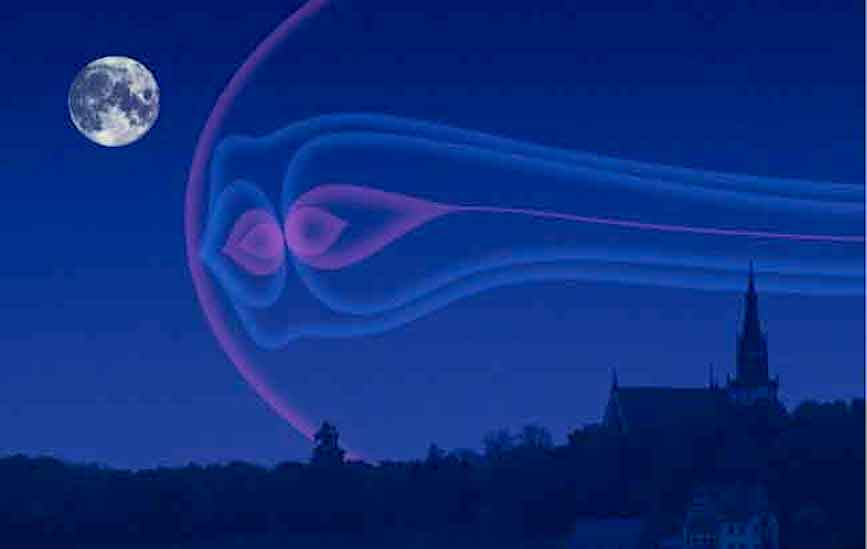
Credit: NASA.
Magnetic
Field of Earth
Near the surface, the Earth's magnetic
field can be approximated as a dipole field
centered close to the center of gravity and
offset from the axis of rotation by blah
degrees. The magnitude ranges from 25 to 65
microtesla. This magnetic field protects our
atmosphere from being stripped into space by the
solar wind, points our compasses north for
navigation for humans and some species of birds,
and gives us the aurora.
Early ideas
about why a compass points north:
- Divine
attraction to the North Star.
- Mass
amounts of iron ore in the arctic.
- Permanent
magnet at core or in crust.
We now know
that the magnetic field of Earth is generated
from a geodynamo in the geophysical flows of
the Earth's outer core. The paleomagnetic
record indicates that the geomagnetic field
has existed for at least three billion years [4]. The polarity of the dipole
moment of the magnetic field reverses
continually throughout its existence.
A simulation of a reversal
was published in 1995 [7]. 36,000
years into the
simulation the
magnetic field
underwent the reversal
of its dipole moment.
The reversal took a
little over 1000 years
to complete.

image source: [4]
|

If Jupiter's magnetosphere were
visible to us.
Credit: NASA.
|

